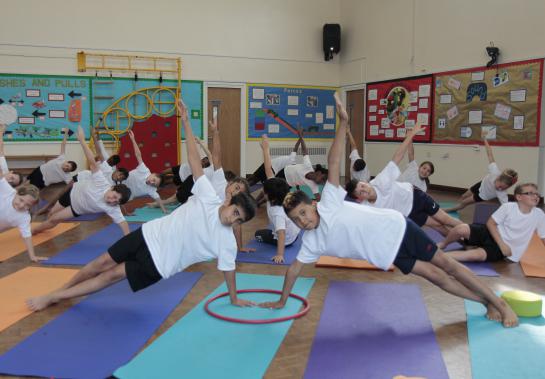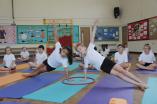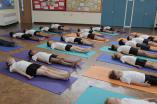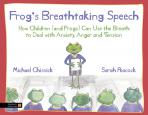Heads, would you know a good children's yoga teacher if you met one?


Introduction
Here are some guidelines that will help Heads decide whether they are in the presence of a children's yoga teacher who will be able to give their pupils some of the remarkable life skills that yoga has to offer.
Thinking about introducing yoga into your school?
If you are, there are some incredible benefits for pupils and the school as a whole. However without any recognised national teaching qualification to assure you; and perhaps not knowing enough about yoga, how will you know if a potential children's yoga teacher is good enough.
Crucial to your choice is how you decide to set up the yoga in your school. The choice is:
Yoga as part of the integrated school day, orYoga as an after school or lunchtime club
In my opinion yoga taught as part of the integrated school day, within established school routine, plus input from teaching staff results in a much livelier, more vibrant and fun learning experience; and crucially allows for a greater focus on the social and emotional aspects of children's learning.
It is within this context that I offer guidelines as to what to look for in a good children's yoga teacher.
The ideal children's yoga teacher
The ideal children's yoga teacher will be a qualified primary or secondary school teacher and at the same time a qualified yoga teacher. Frustratingly people like that are rare. That does not mean you should discount anyone with experience in only one camp.
There are some excellent children's yoga teachers out there. Those with an existing primary or secondary background will almost certainly shine in terms of their classroom management and should be making sure that they are developing their yoga knowledge.
Similarly teachers with a sound yoga background will be ahead in terms of their yoga knowledge and should be taking every opportunity to enhance their classroom management skills.
The Best Way to Assess
The best way to assess the teacher is to observe him/her teaching two or three whole classes. You could send in your most demanding classes. If you do, be fair and give the teacher details about any children with behavioral problems or special needs in advance so that they can factor that into their planning.
Posture Work: 'Hang on - I know nothing about yoga postures!
Of course if you know nothing about yoga you will not know whether the posture work is correct and safe. So let's put this issue into perspective. There is very little risk of injury to children in the yoga lesson. In fact there is more risk of injury in a PE lesson, in football training and matches, at ballet classes, gymnastics clubs, or simply bumping heads in the playground. As long as the teacher follows the GOLDEN RULE, which is that children hold postures for seconds, not minutes and nobody is looking for perfection, then all will be fine.
Of course, Year 6 children have the strength, co-ordination and balance to hold postures longer than nursery children. They also have more developed communication and cognitive skills to better understand instructions. Nursery and Year 6 are the extreme poles along the teacher's continuum of what and how to teach, and how long to hold postures. The greatest risks are to children who come into class with existing health problems, for example recovering from broken limbs.
Lesson Structure & Planning
Anyone who turns up without a lesson plan professing to "go with the flow"would be shown to the door immediately. You should expect a professional lesson plan, which must include all the elements you would expect from any curriculum area in your school. A list of postures is simply not good enough. At the very least you must be able to see clear learning objectives, timing, opening and closing activities, plenary focus and the main development of the lesson.
However in addition, there are some elements or activities that are crucial to a high quality children's yoga lesson. The lesson must include time for:
SequenceCalmingRelaxation
Sequences are fundamental to the yoga lesson because:
- Children enjoy the security of the structure that sequences bring i.e. they feel more secure knowing what is coming next
- Sequences demand concentration and co-ordination
- They provide opportunities for children to step up and lead the class
- Children enjoy the flowing body movements
- It is a more invigorating way to practice yoga compared to isolated postures
Calming
A good yoga teacher will use this time to encourage the children to sit quietly and reflect. This time can also be used to teach yoga breathing techniques
Relaxation
Relaxation is a fundamental part of the lesson. Following the energetic and challenging posture work, children now need time now to relax their bodies and minds.
You would be looking to see that the teacher is carefully leading the children through a relaxation technique using her own voice in a relaxing and calm tone. In addition, the technique she is using needs to be simple, easy to follow and can be taken away by the children to use in situations where relaxation would help them; for example the night before an exam or test, airplane flights and so on.
Conclusion
These are just a few basic aspects to look out for before you go ahead and hire yourself a children's yoga teacher. That said the true test of a great children's yoga teacher is to make sure that the children have been challenged, had fun and can't wait till the next yoga lesson.






